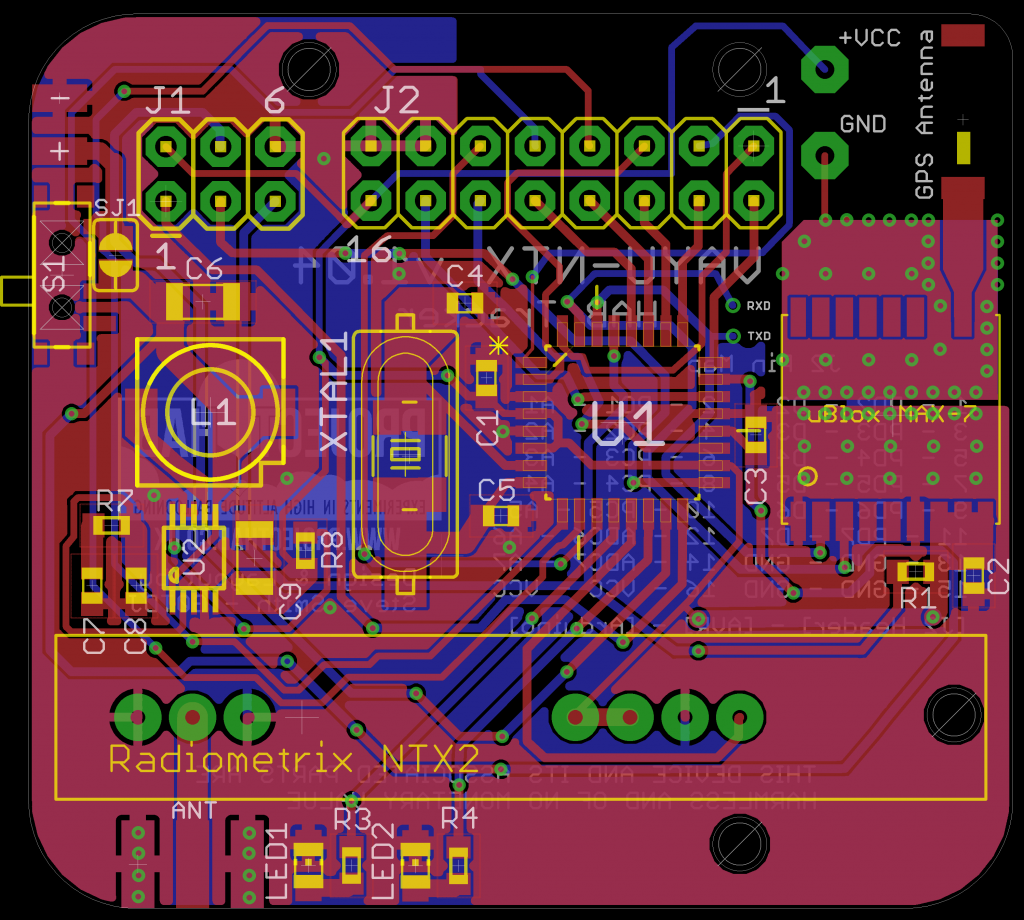I’ve been busy testing the VAYU-NTX PCB and cobbling together code to enable it to send telemetry. I have managed to combine Anthony Stirk‘s RTTY demo code and Matthew Beckett‘s NORB 3 code along with a few snippets of Chris Stubbs‘s CHEAPO code to create VAYU-NTXs firmware. As is always the case with these things, there were several problems along the way. Not least the hardware modification I needed to carry out to get the v1.03 board to accept Anthony’s PWM based routine. However, after I’d sorted that and added some features from the original VAYU code, I just couldn’t get the Satellites value to register properly. It turned out to be a rogue character that managed to slip into the ‘C’ formatting line in the code. I’m not sure how it got there but I didn’t know enough ‘C’ to spot it. It took the keen eye of Matthew Beckett to exclaim ‘Ah!’ and help fix the problem.
The telemetry currently sends the following information:
$$callsign, sentence counter, time, latitude, longitude, altitude, distance from launch, GPS lock (1/0), battery voltage, satellites – Checksum
Don’t forget to change the callsign and launch co-ordinates in the code before use. You will find the callsign in the parse_NMEA function. The two ‘$’ signs are required for decoding so leave those in. The launch co-ordinates are in the variable declarations at the beginning of the code. If you don’t know the co-ords. for your launch, you can find them by looking on Google Maps. Locate it, right click on the map and click on ‘What’s Here’ in the pop-up menu and the Lat/Lon will appear in the search bar.
When testing the original v1.03 PCB, I found it useful to check the +VCC line a few times and the TXD and RXD lines from the GPS unit. I have added dedicated test points for this purpose. The +VCC and GND pads are above the GPS unit and the TXD/RXD pads are just to the left of the GPS unit near it’s top strip of contacts. Also new from v1.03, LED2 is now orientated the same as LED1 and I have added extra sized contacts on the crystal pads to accommodate a smaller SMD type 5052 package. The option for bridging the switch position is more clearly marked and (not shown above) the battery connections are shown on the silk screen.
I have ordered a fresh batch of PCBs from Hackvana with the fixes mentioned above. This is with an additional soldering stencil to allow more convenient assembly. I’ll document the process when I build the first of the new batch.
Links to all the design files can be found on the VAYU-NTX v1.04 page.

